2021PAT考试时间定在11月4日,如果你有申请牛津工程、材料科学、物理等专业的打算,就可以开始准备PAT这个前置笔试啦。本文就来整理一些PAT的考试特点和来自牛津官方的加分技巧,让复习更有针对性。
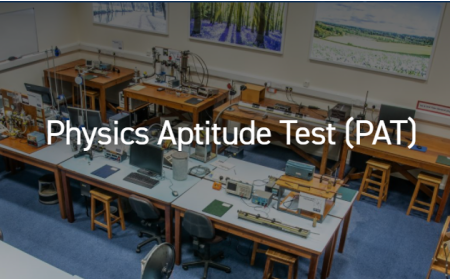
2021PAT考试时间与报名时间
今年的考试时间定于11月4日,想要参加测试的同学需要在10月15日之前通过剑桥评估招生考试网站报名。
想要申请牛津大学Engineering, Materials Science, Physics ,Physics and Philosophy专业的学员需要留意啦。
来自牛津的官方复习提醒
01 2021年的考试将采用与2018年、2019年和2020年历年考题相同题型
02 自2018年起允许使用计算器
03 多项选择题在2015年被取消,然后在2017年重新引入
04 从2015 年开始,分值20分的长物理问题被淘汰,取而代之的是分值低于10分的短问题
此外,我们再来补充一下,PAT 很喜欢考查学员对课程体系内学过的知识层面的认知深度。针对 A-Level 里滚瓜烂熟的公式、定理,很多学员可能不太会思考过它们背后的来龙去脉。PAT 就会经常引导学员思考一些更底层、本质的问题。因此复习的时候要多加注意。

2021PAT考试大纲:数学部分
PAT测试是数学与物理的混合测试,根据牛津官网上给出的考试大纲来看,具体考点有以下内容
基本数学Elementary mathematics:
主要包含算数、几何、概率、代数、不等式、三角函数、对数、指数等。
微积分Calculus:
主要包含多项式的微分与积分、曲线斜率、奇偶函数等。
Syllabus for the mathematics content of Physics Aptitude Test
Elementary mathematics:
Knowledge of elementary mathematics, in particular topics in arithmetic, geometry including coordinate geometry, and probability, will be assumed. Questions may require the manipulation of mathematical expressions in a physical context.
Algebra:
Knowledge of the properties of polynomials, including the solution of quadratics either using a formula or by factorising.
Graph sketching including the use of differentiation to find stationary points.
Transformations of variables.
Solutions to inequalities.
Elementary trigonometry including relationships between sine,cosine and tangent (sum and difference formulae will be stated if required).
。Properties of logarithms and exponentials and how to combine logarithms, e.g. log(a)+log(b)= log(ab)
Knowledge of the formulae for the sum of arithmetic and geometric progressions to n (or infinite) terms.
Use of the binomial expansion for expressions such as (a+bx)n, using only positive integer values of n.
Calculus:
Differentiation and integration of polynomials including fractional and negative powers.
Differentiation to find the slope of a curve, and the location of maxima and minima.
Integration as the reverse of differentiation and as finding the area under a curve.
Simplifyinq integrals by symmetry arquments including use of the properties of even and odd functions (where an even function has f(x)= f-x), an odd function has f(-x)= -f(x)).
内容来自:牛津官网
2021PAT考试大纲:物理部分
力学Mechanics:
主要包含距离、速度、加速度、圆周运动、牛顿运动定律、摩擦力、动能、势能、能量与动量守恒等。
波与光学电Waves and optics:
主要包含横波、纵波、波的振幅频率波长速度、电磁波谱的基本特性、反射、折射等
电和磁Electricity and magnetism:
主要包含电流、电压、电荷、电阻、电路、电荷、光电效应等。
自然世界Natural world:
主要包含原子结构、太阳系天体基本知识、重力作用下的轨道知识、卫星等
Syllabus for the physics content of Physics Aptitude Test
Mechanics:
Distance, velocity,speedacceleration, and the relationships between them, e.g. velocity as the rate of change of distance with time, acceleration as rate of change of velocity with time. Understand the
difference between vector quantities (e.g. velocity)and scalar quantities (e.g.speed).Knowledge and use of equations such as speed = distance / time, acceleration = change in velocity / time or the SUVAT equations.
Interpretation of graphs,e.g. force-distance, distance-time, velocity-time graphs and what the gradient of a curve or area underneath a curve represents.
Response of a system to multiple forces; Newton's laws of motion; know the difference between weight (=mg) and mass; vector addition of forces.
Circular motion including equations for centripetal force(F=mw?r or F=mv2/r)and acceleration(a=v2/r or a=w2r).
The meaning of the terms friction, air resistance and terminal velocity and how they can be calculated.
Levers(including taking moments about a point on an object). pulleys (including calculating the tension in a rope or the overall motion in a system of ropes and pulleys and other simple machines combining levers, springs and pulleys.
。 Springs, including knowledge of Hooke's law(Force =-kx)and stored potential energy(=1/2 kx2). Kinetic energy(= 1/2 mv2) and gravitational potential energy (= mgh in a constant gravitational feld) and their inter-conversion;what other forms of energy exist (e.g.thermal, sound).
Conservation of energy and momentum (=mass x velocity); power(=enengy transfer/time) and work( = force x distance moved in direction of force).
Waves and optics:
An understanding of the terms longitudinal and transverse waves; and that waves transfer enerqy without net movement of matter.
Be able to define the amplitude.freguency, period. wavelenath and speed of a wave, Knowledge and use of formulae for the wave speed = wavelength x frequency and frequency = 1 / period (with units of hertz, Hz).
Basic properties of the electromagnetic spectrum, e.g. identify and correctly order parts of the
spectrum by wavelength or frequency (radio waves, microwaves, IR, visible light, UV, X rays and gamma rays) and the nature and properties of electromagnetic waves (transverse, travel at the speed of light in a vacuum).
Description of reflection at plane mirrors, where the angle of incidence (the angle between the incident ray and the normal) = angle of reflection (angle between the reflected ray and the normal).
Refraction, including the defnition of refractive index (n) as the ratio of the speed of light in a vacuum to the speed of light in a material and Snell's lawnsin=sin0Elementary properties of prisms and optical fibres including total internal reflection, where total internal reflection occurs at an angle 0. when sin0=n2/n:
Qualitative understanding of how interference, diffraction and standing waves can occur.
2021PAT考试大纲,内容来自:牛津官网

Electricity and magnetism:
Understanding of the terms current (= charge / time), voltage (potential difference = energy / charge),charge, resistance(= voltage current and links to energy and power (power = voltage x current, power = energy/time). Knowledge of transformers, including how the number of turns on the primary and secondary coils affect the voltage and current.
Understanding circuit diagrams including batteries wires, resistors, filament lamps, diodes,
capacitors, light dependent resistors and thermistors. Knowledge of current, voltage and resistance rules for series and parallel circuits.
Knowledge of the force between two point charges(Force= kQ1Q,/r2(wherek is a constant))and on a point charge in a constant electric feld (Force = charge x electric feld).
Understanding that current is a flow of electrons: the photoelectric effect. where photoelectrons are emitted if they are given sufhcient energy to overcome the work function of the material, and how to find the energy of accelerated electron beams ( energy = charge x potential difference).
Natural world:
Atomic structure; that atoms consist of protons, neutrons and electrons, definition of the atomic number, Bohr model of the atom.
Basic knowledge of bodies in our Solar System, including planets, moons, comets and asteroids.(Name and relative positions of the planets should be known but detailed knowledge of their physical parameters is not required).
Know what is meant by the phrases 'phases of the moon' and 'eclipses' and how the position of the observer on the Earth affects their view of these events.
Knowledge of circular orbits under gravity including orbital speed, radius, period, centripetal
acceleration, and gravitational centripetal force. This may include equating the force between two masses due to gravity(F=GM,M2/r2) to centripetal force of a smaller body orbiting a larger body(F=mw7r or F=mv2/r)and use of centripetal acceleration(a=V2/r or a=w2r)
Understanding of the terms satellites; geostationary and polar orbits.
内容来自:牛津官网
2021PAT考试3个月倒计时已开始,作为牛津申请的前哨站,只有通过笔试,才能拿到面试邀请,然后走向最终录取。如果你想知道怎么应对PAT题干长、出题角度刁钻的难度,可以点击预约试听【橡沐牛剑笔试培训班】——
牛剑前辈领衔授课,
围绕PAT、STEP、MAT、ENAA、TSA等笔试的
重点和热点问题定制课程
层层剖析知识框架
科学练习高频考点
积极应对牛剑"选拔赛”

更多牛剑笔试攻略点击



















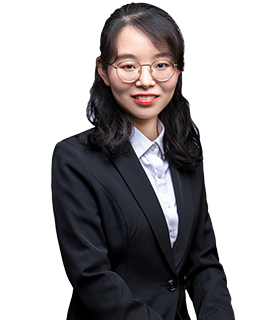




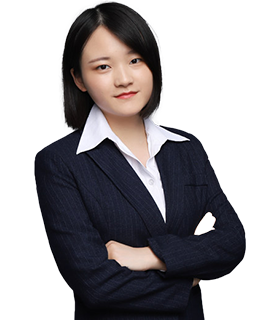











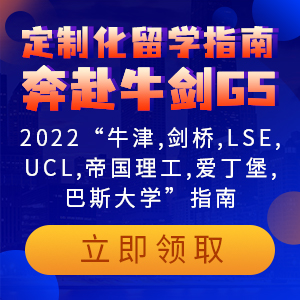




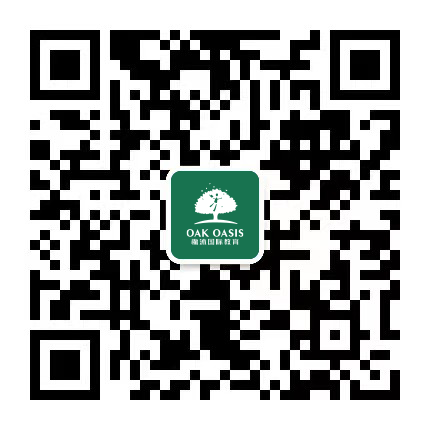
 沪公网安备 31010502004453号
沪公网安备 31010502004453号




 成功提交后我们将尽快与您联系,请注意来电哦!
成功提交后我们将尽快与您联系,请注意来电哦!











